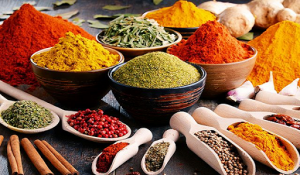
India is known as one of the major producers and exporters of spices. That is why starting a business of spices in India is considered a profitable option. Spice powder making business is one of those businesses that ensures the owner with good returns with less investment. Moreover, anyone can start a business of spices.
All kinds of spice powders are the key ingredients in all types of Indian cuisines. Spices help a dish in many ways such as it adds aroma, color, and good taste to the food. Some of the most common types of spices used in India are turmeric powder, chili powder, coriander powder, cumin powder, etc., and whole spices such as cardamom, pepper, cumin, bay leaf, cinnamon, and many more. Hence, setting up a business in the spices sector is likely to succeed.
Related Projects:- Spices and condiments, Indian Kitchen Spices, Masala Powder
Procedure for Producing Spices Powder
Opening the business of spices is easy but there a lot of steps that are involved in it and one must follow these steps carefully to get the best spices.
Cleaning
The first and most important step is cleaning the spices if not done properly it can lead to being the source of many diseases. Additionally, big physical impurities like stones, dust, and dirt should be cleaned manually by employing different methods for getting rid of the impurities.
Related Books:- Spices And Condiments Cultivation
Drying
Once the cleaning is done of the whole spices it is dried. Commonly, it is sun-dried, but artificial methods can also be used to speed up the process. The quality of the powdered spice depends on how well the spices are dried. There are two kinds of drying process depended upon the climatic conditions:
- Drying during the dry season
- Drying during the wet season
Roasting
After drying the spices are roasted to infuse the aroma, color, and good taste to the powdered spice.
Pulverizing / Grinding
Pulverizing or Grinding machines are used to grind the raw, whole spices into the powdered form.
Grading
Grading is done depending on the inclusions and proportion of spices mix with their raw materials. Moreover, these are graded based on the sizes, flavor of spice, shape, density, and color of the spice.
Sieving
The powdered spices are then sieved to make sure that all the spices have a uniform mesh size.
Related Videos:- Essential Oils, Phytochemicals, Aromatic Chemicals, Aromatic Compounds, Spice Oils and Oleoresins Projects
Packaging
After all these steps, the spices are sent for the packaging. The powdered spices are weighed and packed as per the quality which needs to be packed.
Sealing
It is vital to seal every packet properly. Sealing is an important step if it is not done carefully it can lead to wastage of the spice mix, as it can get easily affected by moisture, dust, or may also get infected with pests.
Market Overview of the Spices Business
Globally, the spice market size was valued at USD 5.86 billion in the year 2019 and is anticipated to expand at a CAGR of 6.5 % from the year 2020 to 2027. High demand for authentic cuisines globally is one of the major factors driving the consumption of spices. The growing demand and fondness for enjoying different types of flavors in foods and snacks are most likely to prompt manufacturers to produce high-quality, appealing, and reliable products that can maintain consistent standards globally.
Conclusion
NPCS has made a project report on “Whole Spices Processing (cleaning / Grinding & Packaging)- Manufacturing Plant, Detailed Project Report, Profile, Business Plan, Industry Trends, Market Research, Survey, Manufacturing Process, Machinery, Raw Materials, Feasibility Study” the report covers all the important aspects of business such as analyzing the market, confirming availability of various necessities such as plant & machinery, raw materials to forecasting the financial requirements. You can get this project report from the official website of NPCS.
Related project:- WHOLE SPICES PROCESSING (Cleaning Grinding & Packaging)
Noo_Art2021